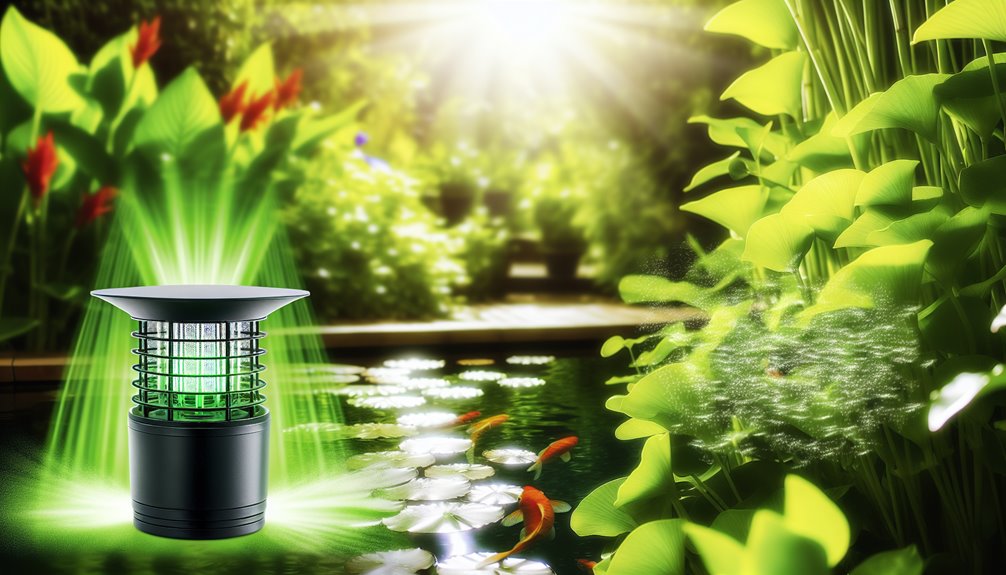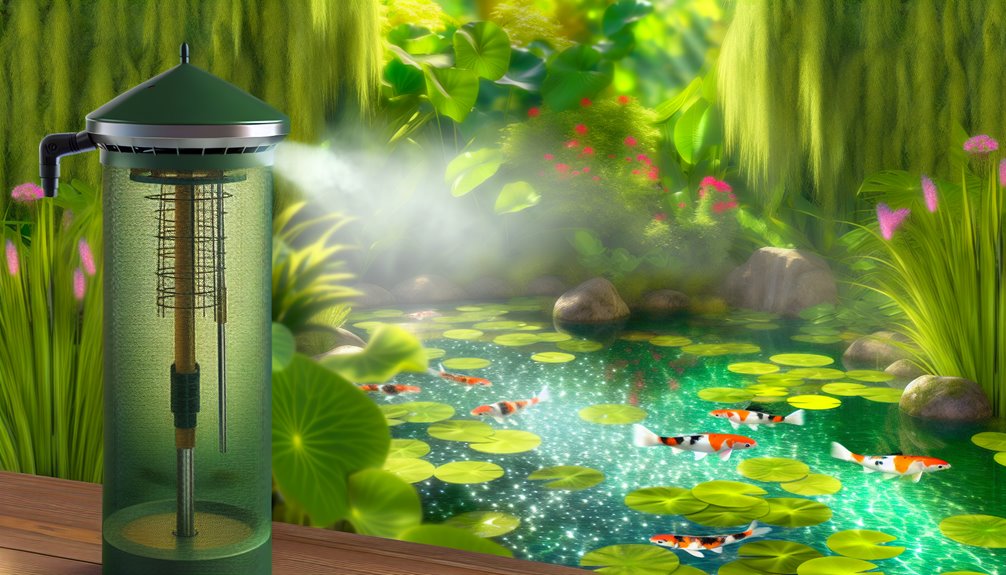Nothing short of a two-front war will tame mosquitoes around koi ponds and gardens. You pair barrier sprays on shaded resting zones (undersides of leaves, fences, eaves) with traps that lure host-seeking females using CO2, heat, and lactic cues. The spray intercepts Culex and Aedes adults at roost, while traps siphon off new arrivals before oviposition. Done right, you protect koi and pollinators with selective actives and placement—yet the real gains come when you…
Why Combining Traps and Sprays Works Better Than Either Alone

Although each tool targets a different life stage, you cut mosquito pressure fastest when you pair traps with sprays because their modes of action are complementary and non-overlapping. You intercept host-seeking females of Culex, Aedes, and Anopheles with CO2 or lure-baited devices, boosting trap efficiency by exploiting olfactory taxis. Simultaneously, you deploy residual, pond-safe contact sprays to knock down emergent adults, maximizing spray effectiveness without disturbing koi. Traps reduce oviposition and pathogen vectors; sprays curtail survivorship and parity. This tandem reduces reproductive value (R0) by removing blood-ready cohorts and post-emergent adults, shortening generational turnover and protecting guests, neighbors, and fish.
Targeting Adult Resting Zones With Barrier Sprays
Pair traps with a perimeter barrier to hit adults where they hide. You’ll target adult mosquito habitats mechanistically: shaded understory foliage, dense hedges, undersides of leaves, stacked pots, and eave soffits. Focus on taxa-specific resting behavior—Culex favor cool, vegetated zones; Aedes rest low in clutter; Anopheles shelter near damp shade. Apply residual barrier sprays to foliage surfaces where adults contact cuticle-active ingredients. Calibrate droplet size for leaf penetration and underside coverage to maximize spray effectiveness. Treat vertical and horizontal vegetation faces, avoiding koi water. Reinspect in 14–21 days; reapply based on pressure, rainfall, and vegetation growth.
Capturing New Arrivals and Stragglers With Traps

Even as barrier sprays suppress resting adults, you’ll intercept newcomers and late-emerging females with targeted traps that exploit species-specific host-seeking cues. Deploy CO2, heat, and lactic-acid lures to draw Aedes and Culex, while oviposition cups with hay-infused water recruit gravid Culex quinquefasciatus. Position units downwind and along hedgerow corridors to match mosquito movement. Validate trap effectiveness by tracking nightly female captures and parity dissections, adjusting lure blends seasonally. Use mesh sizes preventing escape and dark visual contrasts that enhance landing. Rotate attractants to prevent habituation. You’ll reduce reinvasion pressure and close gaps left by spray timings and emergence pulses.
Protecting Koi, Beneficial Insects, and Pollinators
Because traps and barriers can ripple through pond food webs, you need controls that spare Cyprinus carpio (koi), conserve beneficial arthropods, and minimize pollinator exposure. You protect koi health by excluding pyrethroids from water, using Bacillus thuringiensis israelensis for Culicidae larvae, and maintaining aeration that limits anoxic pockets. Choose CO2 or UV traps that target host-seeking female mosquitoes, not nonbiting Chironomidae. Preserve insect balance by avoiding broad-spectrum residues on floral surfaces; prefer microencapsulated actives directed at resting Aedes and Culex. Provide nectar refugia and nighttime-only operations to reduce Apidae contact. Monitor Odonata, Gyrinidae, and Notonectidae as bioindicators.
Placement and Timing Strategies for Ponds and Garden Beds

While site ecology dictates performance, you’ll optimize control by positioning devices where Culicidae biology intersects with your pond and beds. Use trap placement to exploit Anopheles and Culex flight lines: set CO2 or lure traps downwind, shaded, 5–10 meters from water, near emergent vegetation and hedges where host-seeking occurs. Place oviposition traps at cryptic puddling sites, not in koi water. Time barrier sprays to adult activity: dusk and dawn for Culex pipiens and Aedes albopictus; avoid pollinator foraging windows. Target cool, vegetated resting substrates. Synchronize spray timing to degree-day peaks after rainfall, prioritizing larval-to-adult emergence intervals for community protection.
Monitoring, Maintenance, and Adjusting Your Integrated Plan
As your traps and treatments run, instrument the system and iterate. You’ll log captures by species—Culex near ponds, Aedes in containers—to guide monitoring effectiveness. Track larval dips at fixed stations; note instar stages and pupae ratios to quantify reproduction pressure. Calibrate CO2, lure cartridges, and fan flow monthly; align maintenance schedules with rainfall and temperature thresholds. Rinse intake screens, replace UV nets, and clear vegetation that shades traps. Verify barrier sprays with residue tests on foliage bioassays while protecting koi with targeted applications and aeration. If gravid counts climb, reposition traps upwind, tighten source reduction, and adjust spray intervals.
Conclusion
At Mosquito Eliminators of South MS, I truly believe in the power of combining effective mosquito traps with barrier sprays to create a peaceful environment for your koi ponds and gardens. It’s amazing to see how these methods work together to protect not just our beloved fish and plants, but also the vital pollinators in our ecosystem. If you’re eager to learn more about how we can help you enjoy your outdoor spaces without the nuisance of mosquitoes, I invite you to visit our website at mosquitoeliminatorsms.com or give us a call at (601) 336-2277. Together, we can create a beautiful, mosquito-free haven for you and your family!

